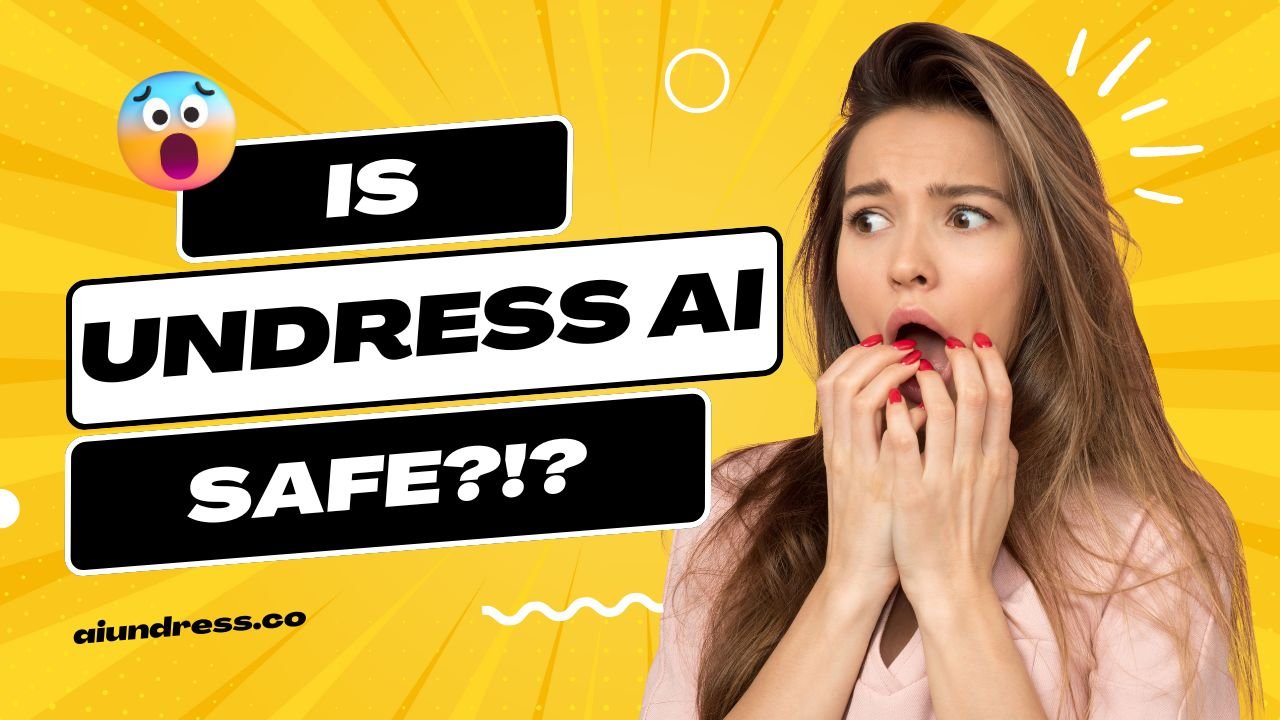In recent years, artificial intelligence has made significant strides in image manipulation, giving rise to tools like Undress AI. These applications use advanced algorithms to digitally remove clothing from images, creating synthetic nude photos. While the technology behind Undress AI is impressive, it raises serious concerns about safety, ethics, and privacy. This article examines the safety aspects of Undress AI and explores the broader implications of its use.
What is Undress AI?
Undress AI refers to a category of AI-powered tools designed to digitally remove clothing from images, creating the illusion of nudity. These applications use deep learning algorithms and generative AI techniques to analyze clothed images and produce realistic-looking nude versions. While the specific implementations may vary, the core functionality remains consistent across different platforms offering this service.

How It Works?
The technology behind Undress AI relies on sophisticated machine learning models trained on vast datasets of human anatomy and clothing patterns. When a user uploads an image, the AI analyzes the subject’s body structure, pose, and existing clothing. It then generates a synthetic nude image based on its learned patterns, attempting to match the subject’s body type and characteristics.
It’s crucial to understand that the resulting images are entirely artificial constructs. They do not reveal any actual nude imagery of the subject but rather represent the AI’s best guess at what the person might look like unclothed based on available data and algorithms.
Is Undress AI Safe?
Undress AI is not considered safe. The technology poses significant risks to privacy, consent, and personal safety. It can be used to create non-consensual intimate images, leading to potential abuse such as revenge porn, cyberbullying, and blackmail. The psychological impact on victims can be severe, causing emotional distress and anxiety. Additionally, Undress AI contributes to the broader issue of AI-generated misinformation and deepfakes, making it difficult to distinguish between real and fake content. The article emphasizes that the potential for harm and misuse far outweighs any perceived benefits, and highlights the need for robust legal frameworks, ethical guidelines, and safety measures to protect individuals from the negative consequences of this technology.
Safety Concerns
While Undress AI may seem like a harmless novelty to some, it presents significant safety and ethical concerns that cannot be ignored.
Privacy Violations
The most immediate concern is the potential for severe privacy violations. Undress AI tools enable users to create non-consensual intimate images of individuals without their knowledge or permission. This capability can lead to various forms of abuse, including:
- Revenge porn: Disgruntled individuals could use these tools to create and distribute fake nude images of former partners or others.
- Cyberbullying: Malicious actors might target individuals with AI-generated nude images to harass or intimidate them.
- Blackmail and extortion: The threat of releasing fake nude images could be used as leverage for blackmail or extortion schemes.
Psychological Impact
The existence and use of Undress AI can have severe psychological consequences for individuals, especially if they become victims of non-consensual image manipulation:
- Emotional distress: Discovering that one’s image has been used to create fake nude content can be deeply distressing and traumatic.
- Anxiety and fear: The mere possibility of being targeted by such technology can create anxiety and fear among individuals, particularly in an era of widespread image sharing on social media.
- Body image issues: The prevalence of AI-generated “perfect” nude images could exacerbate existing body image concerns and contribute to unrealistic beauty standards.
Misinformation and Deepfakes
Undress AI technology contributes to the broader problem of AI-generated misinformation and deepfakes. As these tools become more sophisticated, it becomes increasingly difficult to distinguish between real and fake content. This blurring of reality can have far-reaching consequences:
- Erosion of trust: As people become more aware of the existence of such technology, it may lead to a general erosion of trust in visual media.
- Political manipulation: While current Undress AI tools focus on creating nude images, similar technology could be used to create misleading political content or fake compromising situations involving public figures.
- Legal challenges: The proliferation of AI-generated fake nude images presents new challenges for law enforcement and the legal system in addressing issues of consent, privacy, and digital evidence.

Legal and Ethical Considerations
The rapid development of Undress AI technology has outpaced legal frameworks in many jurisdictions, creating a complex landscape of ethical and legal considerations.Legal StatusThe legality of creating and distributing AI-generated nude images varies by country and jurisdiction. In some regions, recent legislation has begun to address this issue:
- United Kingdom: As of 2024, it is now illegal to create and distribute non-consensual intimate deepfake images of adults. This law aims to protect individuals from the misuse of AI technology for creating explicit content without consent.
- United States: Laws regarding deepfake pornography and non-consensual intimate imagery vary by state, with some states having specific legislation addressing these issues.
However, the global nature of the internet and the rapid pace of technological advancement make it challenging for legal systems to keep up with the potential misuse of Undress AI tools.
Ethical Implications
The development and use of Undress AI raise significant ethical questions:
- Consent: The fundamental issue of consent is at the core of the ethical debate surrounding Undress AI. Creating nude images of individuals without their explicit consent violates personal autonomy and dignity.
- Objectification: These tools can contribute to the further objectification of individuals, particularly women and minors, who are often the primary targets of such technology.
- Responsibility of developers: There is an ongoing debate about the ethical responsibility of developers who create and distribute Undress AI tools, even if their intended use is for entertainment or artistic purposes.
Safety Measures and Precautions
Given the potential risks associated with Undress AI, it’s crucial to consider safety measures and precautions:
For Individuals
- Be cautious about sharing images online, especially on public platforms.
- Use privacy settings on social media to control who can access your photos.
- Be aware of the existence of such technology and its potential misuse.
- If you become a victim of non-consensual intimate imagery, report it to the platform and consider legal action where applicable.
For Platforms and Developers
- Implement strict ethical guidelines for the development and use of AI image manipulation tools.
- Incorporate safeguards to prevent the use of these technologies on non-consenting individuals.
- Collaborate with law enforcement and policymakers to address the challenges posed by this technology.
For Society and Policymakers
- Develop comprehensive legislation to address the creation and distribution of non-consensual AI-generated intimate imagery.
- Invest in education and awareness programs to inform the public about the risks and ethical implications of Undress AI technology.
- Support research into detection methods for AI-generated fake images to help combat misinformation and abuse.
Conclusion
While Undress AI represents a significant technological achievement, its safety implications are profound and concerning. The potential for privacy violations, psychological harm, and the spread of misinformation far outweigh any perceived benefits or novelty factor.
As this technology continues to evolve, it is crucial for society to engage in ongoing discussions about its ethical implications and to develop robust legal frameworks to protect individuals from potential abuse. Ultimately, the safety of Undress AI depends not just on the technology itself, but on how we as a society choose to regulate and use it.
The development of AI should prioritize human dignity, consent, and privacy. As we navigate the complex landscape of AI-driven image manipulation, it is essential to remain vigilant, ethical, and proactive in addressing the challenges posed by tools like Undress AI. Only through a concerted effort by individuals, developers, platforms, and policymakers can we hope to harness the potential of AI while safeguarding against its misuse.

